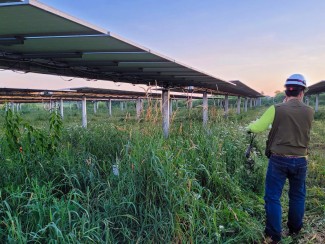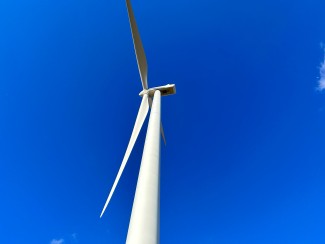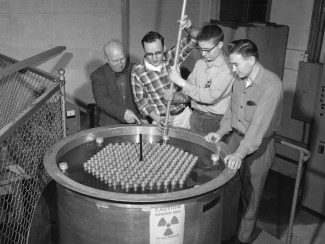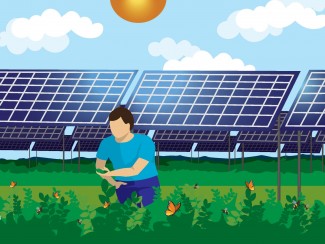Welcome to the Badger Energy Bulletin, a weekly column for energy nerds, with a focus on the Badger State.
Christmas comes late for energy nerds.
That’s because the Energy Information Administration, the independent federal data clearinghouse, needs a couple of months to gather and clean data on the nation’s energy grid.
So early spring is when we get December numbers that give us the full picture of the past year, and 2024 held some interesting data points.
Most notably, last year was essentially the dawn of the solar era in Wisconsin, thanks to a raft of new plants that began pumping thousands of kilowatt-hours into the grid.
But with policy uncertainty and a White House committed to boosting fossil fuels, the question is whether this new star will continue to rise.
More on that later.
Last year, Wisconsin generators pumped out 65.6 gigawatt-hours (or 65,600,000 megawatt-hours). For reference, the typical Wisconsin household uses about 8.4 mWh per year.
That’s the highest output since 2018, marking a full return to pre-pandemic levels.
The actual amount of electricity consumed in Wisconsin (68.9 gWh) was higher since Wisconsin is typically a net importer. Total consumption was up slightly over 2023 but lower than 2022.
Looking at the generation mix by fuel reveals a couple of noteworthy trends.
One, fossil gas generation has been steadily growing and shows no sign of slowing, while coal-fired power is on the opposite trajectory.
In 2010, coal accounted for nearly 63% of the state’s electricity, while gas was less than 9%. Gas overtook coal in 2022 and now accounts for nearly 41% of the mix, while coal is now less than 32%.
In some respects that’s progress: burning gas produces less air pollution than coal, although when you factor in upstream methane releases, the climate impact is basically a wash. On the other hand, nearly 3/4 of the state’s generation is powered by fossil fuels, roughly the same share as in 2001.
But you can see some progress if you squint.
Wind, solar, and hydro output produced an all-time high 10% of the overall generation, which contributed to a small dip in fossil fuel generation.
That isn’t much compared to states like Iowa, which produces more than 2/3 of its electricity with wind. But it’s a 40% year-over-year increase, the largest one-year jump ever recorded.
Most of the credit goes to more than 1,200 megawatts of solar energy capacity that came online between December 2023 and December 2024, capping a nearly 10-fold growth in just five years.
“We’re finally starting to see renewables take off in a really meaningful way,” said Chelsea Chandler, climate, energy, and air program director for the nonprofit group Clean Wisconsin.
To put things in perspective, Wisconsin’s clean energy output still lags far behind the nation’s leading renewable energy states, Texas, California, Washington, and Iowa, and 31 states that produce a greater share of electricity with renewables.
While there are policy clouds on the horizon, Wisconsin will likely see continued growth in renewable generation thanks to a slate of recently permitted projects.
“Just with the projects that have been approved, if all of those are constructed and are commissioned, we’re going to more than double our current capacity again, which would be great,” said Sam Dunaiski, executive director of Renew Wisconsin. “Will they all go forward? Of course, that is anyone’s guess.”
Dunaiski notes there are “a million reasons” that a project of any kind can go off the rails, including supply chain disruptions and cost increases, both of which could result from escalating trade wars.
Another variable is federal clean energy tax credits that are being targeted by the Trump administration and Republicans in Congress looking to cut trillions of dollars in spending to offset major tax cuts.
A small but growing contingent of Republican lawmakers are fighting to save tax credits that incentivize clean energy manufacturing and production, which have disproportionately promoted investments in red districts. Still, the fate of the IRA tax credits remains uncertain at best, according to reporting from Heatmap.
Noting that solar accounted for 84% of all U.S. generation capacity installed last year, a recent report from Wood Mackenzie and the Solar Energy Industries Association, predicts state initiatives, corporate demand, and supply chain bottlenecks for gas-fired turbines will mitigate some of the federal policy headwinds, but early phaseout of tax credits combined with other factors could cut projected capacity additions by 25%.
“It’s still growing, but growing slower," said Greg Nemet, professor of public policy at UW–Madison who studies how policy and market forces affect clean energy technology. “The economics of the technology is getting better and cheaper, and fossil fuels are either getting more expensive, or just staying expensive.... That’s probably the biggest driver, and then the IRA was really just about making it go faster.”
Dunaiski doesn’t think the uncertainty will affect any of the Wisconsin projects in the works, and he expects to see a surge in proposed wind energy development, an area where Wisconsin has long lagged its neighboring states.
“As far as we can tell ... it’s still all hands on deck,” he said.
Dunaiski is concerned about growing local opposition to utility-scale wind and solar projects as well as a bill in the state Legislature that would give local governments the power to reject renewable energy developments.
Renewables also face continued competition from gas, which again has seen steady growth since the early 2010s when advances in directional drilling technology allowed U.S. producers to access previously untapped resources, creating a glut of cheap fuel that was difficult to export.
Citing the growing demand for electricity to power data centers, factories, and electric vehicles, Wisconsin utilities are planning major investments in gas-fired power, including We Energies’ plan to spend $2.2 billion on new gas storage facilities and converting its Oak Creek coal plant to run on gas.
At the same time, an expansion of liquified natural gas terminals is opening up export markets, which could spell an end to the relatively low prices of the past decade.
With no resources of its own, Wisconsin currently spends about $14 billion per year importing fossil fuels, which Chandler argues would be better spent on wind and solar, which have no fuel costs and remain some of the cheapest new sources of generation*, even without tax credits.
“We’ve got free sun and free wind here,” Chandler said. “That’s kind of a no brainer, because you can invest that money here in our communities.”
*Additional reading: Check out Daan Walter’s lucid explanation of how building gas and solar is cheaper than building gas alone. (Hint: it’s the fuel cost.)





